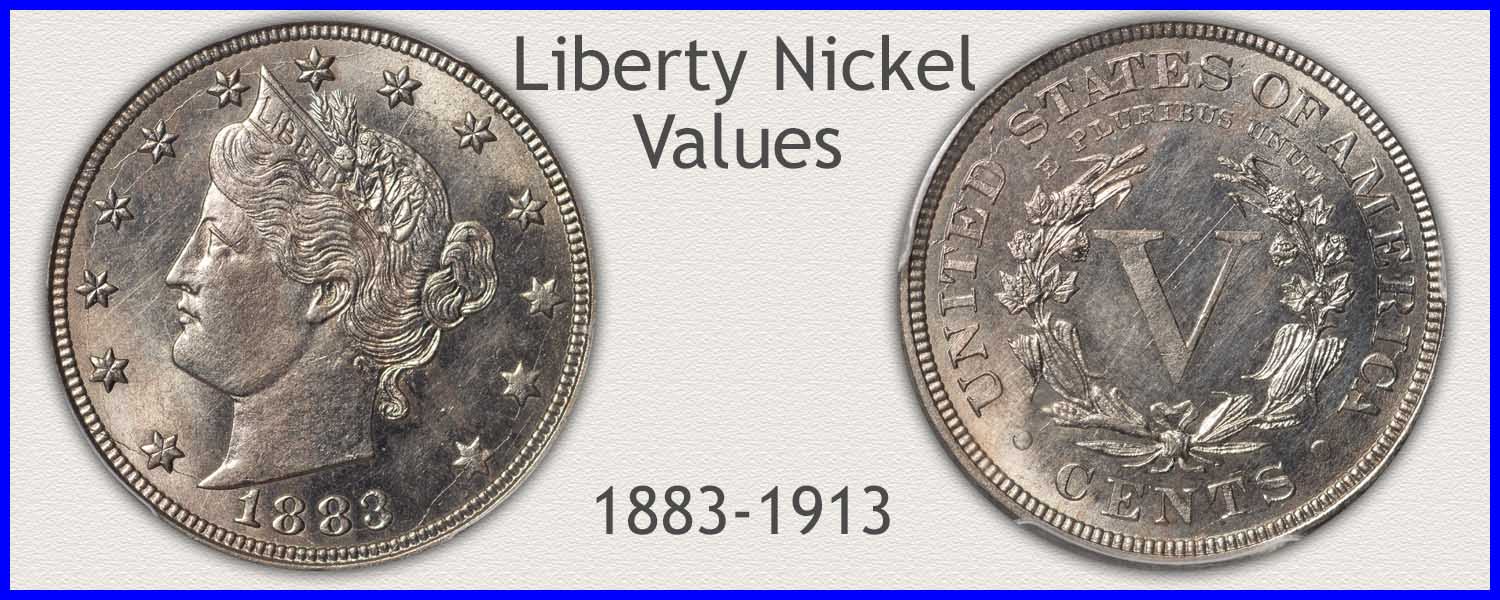Coin Values Moving with Precious Metals: Up-Dated 11/17/2025: Gold $4066 | Silver $50.70
Visual Grading Metrics
Liberty Nickel Extremely Fine Grade
A Liberty nickel with only light wear on the surface begins to qualify at a high grade level. Visual grading metrics focus on specific features of a coin's design. These elements are then judged by comparing to condition standards. Ratings of each metric across a variety of design elements develops a grading score. This metric score determines if a coin places within the Extremely Fine grade.
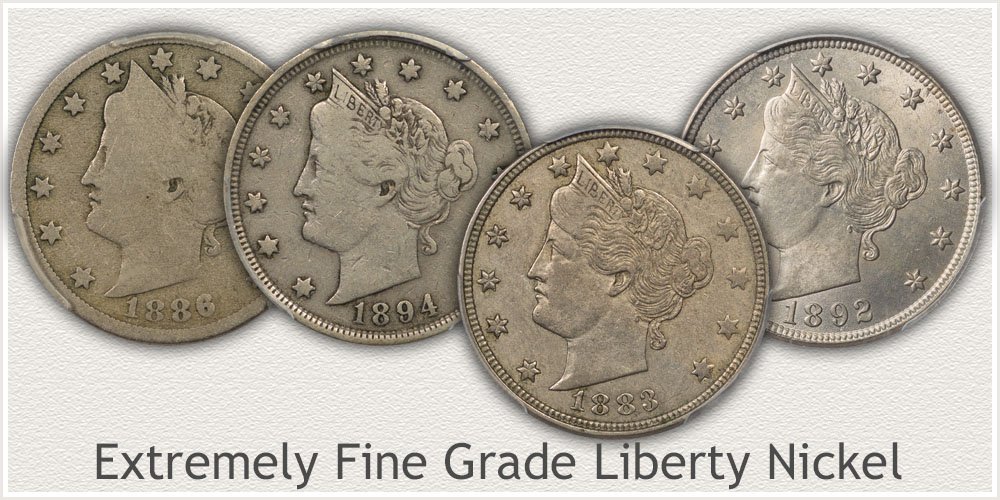 (fig. 1XF) Verify a Close Match to the Extremely Fine Condition Liberty Nickel
(fig. 1XF) Verify a Close Match to the Extremely Fine Condition Liberty Nickel
Grading condition begins with an initial evaluation comparing a coin's surface quality with the imaged example (fig. 1XF). When matching closely, use the following Visual Grading Metrics of a Liberty nickel in Extremely Fine Grade to confirm this quality.
Visual Grading Metrics Identify Liberty Nickels in Extremely Fine Grade
 (fig. 2XF) Locations of the Visual Metrics Used to Identify a Liberty Nickel in Extremely Fine Grade
(fig. 2XF) Locations of the Visual Metrics Used to Identify a Liberty Nickel in Extremely Fine Grade
Illustration (fig. 2XF) identifies key features evaluated using the visual grading metrics method. Rating each feature based on the visibility of remaining design elements judges its condition.
Visual Grading Features Used to Determine an Extremely Fine Grade Liberty Nickel
- Lettering of LIBERTY Within Headband
- Liberty's Hairline Above Forehead
- Hair Below Headband at Forehead
- Hair Above Ear
- Hair Bun
- Ears of Corn on Reverse
- Cotton Leaves
Visual measurements of the above elements are each given a Rating indicating the amount of visible detail. When a specific feature's Rating meets grade level it receives a Positive Score. These combined Scores develop a Final Score determining the Grade.
Research: Rating and Scoring Data Determines Grade Level Requirements
Using this grading process. 27 professionally graded Extremely Fine Liberty nickels were evaluated. Each study nickel was rated and scored using the visual metrics. The percentage of nickels meeting each metric provides the necessary data to qualify at grade level. Percentage results per metric also determined Rating and Scoring requirements. This data helped establish grading guidelines.
🔎Helpful Tools Used to Accurately Grade a Lightly Worn Liberty Nickel Small details on the coin are now important to identify. Thin defined lines, subtle flattened contours, and merged reliefs require a close-up inspection. Magnifying the coin with a 5x to 7x power glass improves the accuracy of the evaluation. This clear view of the surface helps decide between slight and moderate amounts of wear.
Rating the Visual Metrics of LIBERTY
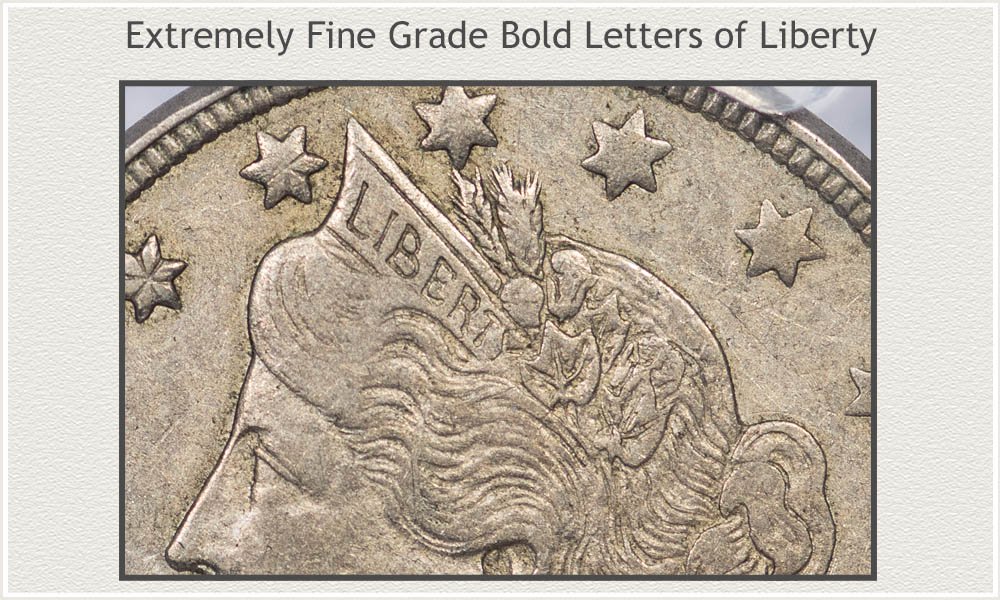 (fig. 3XF) Bold Letters of LIBERTY Help Indicate the Extremely Fine Grade
(fig. 3XF) Bold Letters of LIBERTY Help Indicate the Extremely Fine Grade
As a grading feature, the letters of LIBERTY within the headband are a main focal point. The eye is drawn to this intricate part of Liberty's portrait. Readable and bold lettering stands out as a pleasing feature indicating a quality coin. A standard requirement of the grade at this level requires all letters of "LIBERTY" remain strong and clearly visible. Reference image (fig. 3XF); this illustrates the typical quality of "LIBERTY" on a high condition example.
Visual Rating Definitions | Letters of LIBERTY
- Full/Clear: | Each letter remains complete with a full, clear appearance.
- Worn/Faint/Fading | Letters have a shallow appearance. They begin to appear very thin, often faint.
Of note, the first three letters, LIB are at the highest relief part of the design. These are prone to first signs of fading.
Tap/Click the gray circle within the Score Card indicating the condition of LIBERTY meets the Full/Clear Metric.
Scoring:Letters of LIBERTY
|
|
Positive Score |
Full/Clear Lettering
Research Data Results: Letters of LIBERTY Visual Metrics
Study Group of 27 Extremely Fine Grade Liberty Nickels
All nickels, 100% within the study group, displayed LIBERTY in high quality. Lettering remained Full and Clearly readable. A positive rating and score of this first grading metric also indicate a condition approaching or within the Extremely Fine grade. Continue and rate the additional metrics helping confirm the grade.
Liberty's Hairline Above Forehead
A second initial inspection also identifies a standard requirement of a high-quality nickel. Liberty's forehead and her hairline just above, indicate quickly the overall amount of wear on a coin. At this grade level a recessed line remains separating the hair where it meets her forehead. This line begins at the front of her forehead and continues curving downward, ending at and over her ear.
 (fig. 4XF) Visual Qualities of Liberty's Hairline at the Forehead Used as a Grading Metric
(fig. 4XF) Visual Qualities of Liberty's Hairline at the Forehead Used as a Grading Metric
Illustrated (fig. 4XF) are three condition levels of hairline detail commonly found on coins in higher condition. The "Bold/Strong" example clearly shows the hairline complete. A visible hairline remains on the "Visible/Weak" example, although flattened and slightly faint. Missing parts of the hairline become distinct on the third example. Just above the eye, a flattened area blends the hair with her forehead.
Inspect this recessed hairline closely and Rate its condition based on the following metrics.
Visual Rating Definitions: | Liberty's Hairline
- Bold/Strong: | Hairline appears well defined its full length. The hairline distinctly rises above the forehead, notably in the area above the eye. This hairline shows complete along its entire length from forehead to ear.
- Visible/Weak: | A slight recess defines the separation of Liberty's hairline. This line does remain visible along its length; however, it appears faint and visibly flattened.
- Missing Areas: | Any part of the hairline becomes missing and blended into the forehead.
Rate the condition of Liberty's hairline using the visual metrics.
Rating: Liberty's Hairline Above Forehead
|
Bold/Strong |
Visible/Weak |
Missing Areas |
Grading a Liberty nickel at a high grade level requires a visual hairline along Liberty's forehead. Using the metrics above, Rate a Positive Score to the coin if her hairline is Visible or Bold.
Scoring: Liberty's Hairline Above Forehead Metrics
|
|
Positive Score |
A Bold or Visible Hairline Rates a Positive Score
Research Data Results: Liberty's Hairline
Study Group of 27 Extremely Fine Grade Liberty Nickels
Inspecting a large group of nickels professionally graded within the Extremely Fine condition showed the following percentage results.
- 70% | Of the coins displayed a Bold, fully visible hairline with a distinct raised contour separating the forehead from the hair.
- 30% | A smaller but significant percentage also featured a faint but visible hairline. Indicating the hair design was fully separate from the forehead.
- 0% | None of the nickels within the Extremely Fine grade were worn to the level of Liberty's hairline merged with her forehead.
Conclusion/Key Points: High levels of detail and strong remaining features become a key definition. Judging qualities of Liberty's hairline quickly identifies a coin within range of a high grade.
100% of the study nickels showed at least a visible recess extending along the hairline and forehead elements. This quickly becomes a defining visual metric. Also consider, no coin graded Extremely Fine when any part of the hairline was missing.
Record a Positive Score to a coin meeting the metrics of "Visible" or Bold" hairline.
Scoring Positive in both features, the letters of LIBERTY and her Hairline, confirms a quality coin that needs further evaluation. The following visual metrics evaluate the coin's condition, covering a wide range of features. Additional High metric Ratings and accumulation of Positive Scoring identifies a Liberty nickel in Extremely Fine grade range.
Hair Strand Detail at Beginning of Liberty's Forehead
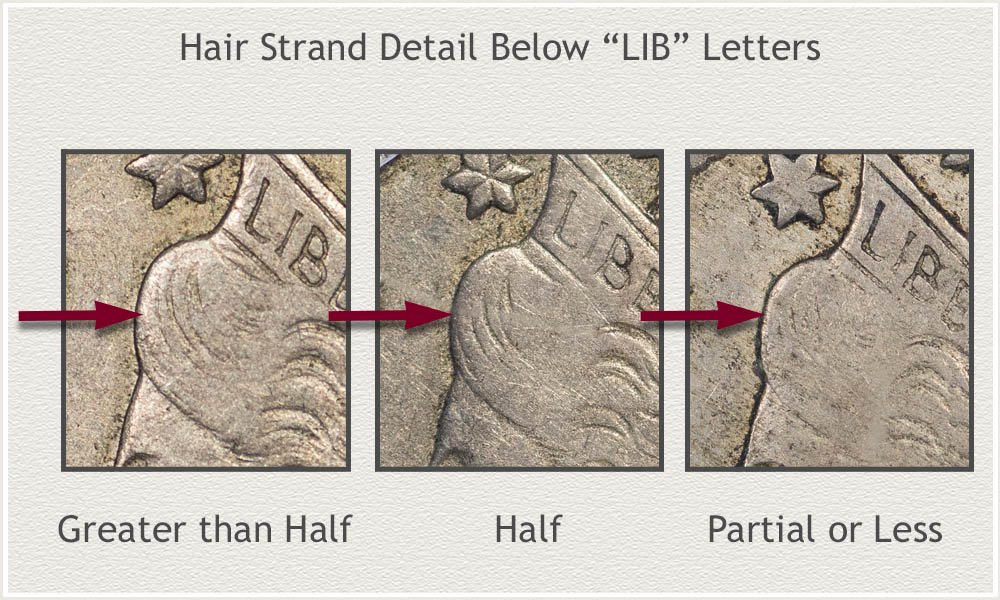 (fig. 5XF) Compare to the Illustrated Levels of Wear to Identify Hair Strand Detail Below LIB Letters
(fig. 5XF) Compare to the Illustrated Levels of Wear to Identify Hair Strand Detail Below LIB Letters
An excellent metric are the hair strands directly above Liberty's forehead. This area quickly displays the "light wear" description of the Extremely Fine grade. The focus of this metric begins at the very front of the portrait. Next, move along to the end of the letter "I." Now envision a line extending downward to her forehead. At the grade level this area displays both smooth metal and some remaining hair strands.
Examine the three examples in illustration the (fig. 5XF). At the front of her hair, some strands remain in varying levels of clarity. Also, a smooth area typically appears below the letter "B" in the headband all the way down to the forehead. Light wear displays overall. Extent and clarity of the hair strands become the visual metric rating the coin's condition.
Visual Rating Definitions: | Forehead Hair Strand Detail
- Greater than Half Strands of hair, recognized by their recessed lines, remain visible over a large portion of the area below the "L." These lines are long and begin at the edge of her hair. They extend below the "I."
- Half Strands of hair travel a short distance. Most do not extend to the very front edge of the forehead or into the area below the letter "I."
- Partial or Less Few hair strands remain visible, likely one or two. This area gives an overall impression of smoothness with slight detail.
Compare closely to the example images. Examine your coin and rate its visual quality.
Rating: Forehead Hair Strand Detail
|
Greater than Half |
Half |
Partial or Less |
Using the evaluation of your coin. Give it a Positive Score of it meets the metric of Half or More Hair Strand Detail remains visible. Check the gray dot to indicate a Positive Score.
Scoring: Forehead Hair Strand Detail
|
|
Positive Score |
Half or More Hair Strand Detail Rates a Positive Score
Research Data Results: Forehead Hair Strand Detail Visual Metrics
Study Group of 27 Extremely Fine Grade Liberty Nickels
Rating the amount of hair strand detail above Liberty's forehead shows a large range of results. The following percentage results of each metric indicates both a variety of detail and wear are found within the grade level.
- 48% | Of the study nickels place high in rating with many strands of hair visible.
- 30% | Of the coins were less detailed, showing a wider area of flatness under the letter "B."
- 22% | Wear has worn the metal to the point of little hair detail showing.
Conclusion/Key Points: Although many nickels were represented in all metrics, from strong to weak detail, a clear percentage separates the group. In conclusion, a total of 78% displayed at least half of the hair strand detail. This becomes the rating metric indicating a coin within the Extremely Fine condition. Give coins with a Rating of Half or More a Positive Score.
Liberty's Hair Strand Detail Above Her Ear
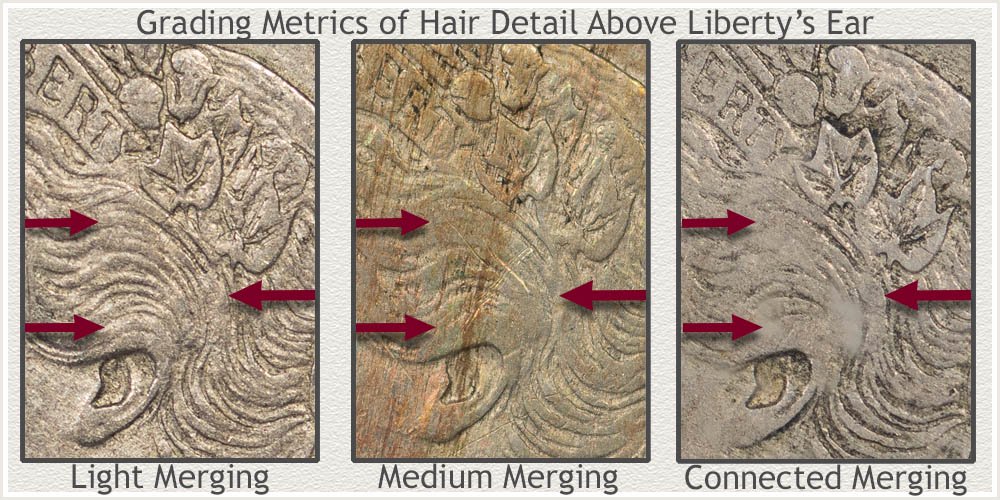 (fig. 6XF) Subtle Detail Separates Wear Levels on Hair Strands Above the Ear
(fig. 6XF) Subtle Detail Separates Wear Levels on Hair Strands Above the Ear
Attention to hair strand detail now moves to a zone from the headband to Liberty's ear and upward to the leaves. Light wear begins to show as smoothing along the top contours of hair strands. As wear progresses, small distinct flat spots appear. The visual metric examines the remaining recesses, the extent of flattened areas, and if flat areas connect.
Defining the zone: Imagine a line from the "E" within the headband downward to the earlobe. Now from the earlobe, envision a line upward to the right side of the second leaf. This becomes a V shaped zone. Within the zone, many visible recessed lines define the hair strands.
Examine the levels of wear illustrated in the image (fig. 6XF). Note specifically the three areas that evidence wear concentrates. These three areas are the first to show fading hair strands. Visual qualities of these areas are then rated according to the following definitions.
Visual Rating Definitions: Liberty's Hair Strand Detail Above Ear
- Light Merging: Each of the small areas is beginning to show light wear. Most hair strands continue across the zone without any blending together. Notice, the top edge of the ear shows the most wear with some loss of detail.
- Medium Merging: Wear has progressed to the point of removing some of the recesses between hair strands. A small flattened area shows above the ear and another below the headband. Also note some fading of lines within hair strands below the leaf. Strong detail remains before and after these smooth, confined areas.
- Connected Merging: Flattened and missing strands in the three areas are now widespread. Flat areas appear larger than surrounding hair detail. A large blending of strands below the headband. A wide area missing detail above the ear. Just under the leaf, another noticeable flat spot. Importantly, missing detail from one area merges with the next. Specifically at this grade range, flatness above the ear merges and connects with the area just below the leaf.
Refer to image (fig. 6XF) and rate the condition of hair strands above the ear into one the of following categories.
Rating: Liberty's Hair Detail Above Ear
|
Light Merging |
Medium Merging |
Connected Merging |
Ample hair detail remaining visible is a strong requirement of the Extremely Fine grade. This zone above the ear displays many recognizable wear levels. Using the visual metrics rating, score the condition of this hair detail.
Light to Medium Merging Rates a Positive Score and meets the Extremely Fine Grade.
Scoring: Liberty's Hair Detail Above Ear
|
|
Positive Score |
Light to Medium Merging Rates a Positive Score
Research Data Results: Hair Strand Detail Above Ear Visual Metrics
Study Group of 27 Extremely Fine Grade Liberty Nickels
Liberty's hair directly above her ear does show different visible qualities easily graded. Many fine strands are distinct when lightly worn. Small flattened areas without detail also become easily seen.
- 52% | Of the nickels studied only show light wear and minor merging within the hair strands above the ear.
- 41% | Were worn to the condition showing a slight merging of strands. Small disconnected, flattened areas indicated the amount of visible wear.
- 7% | A very small percentage of the coins displayed large flat spots with a connection from one area to the other.
Conclusion/Key Points: A strong percentage of nickels at the Extremely Fine grade level showed only light to medium wear amounts. In the area surrounding the ear, most of the hair detail remains easily visible. With 93% of the study nickels within the light to medium wear category this easily becomes a reliable metric.
Liberty's Hair Bun
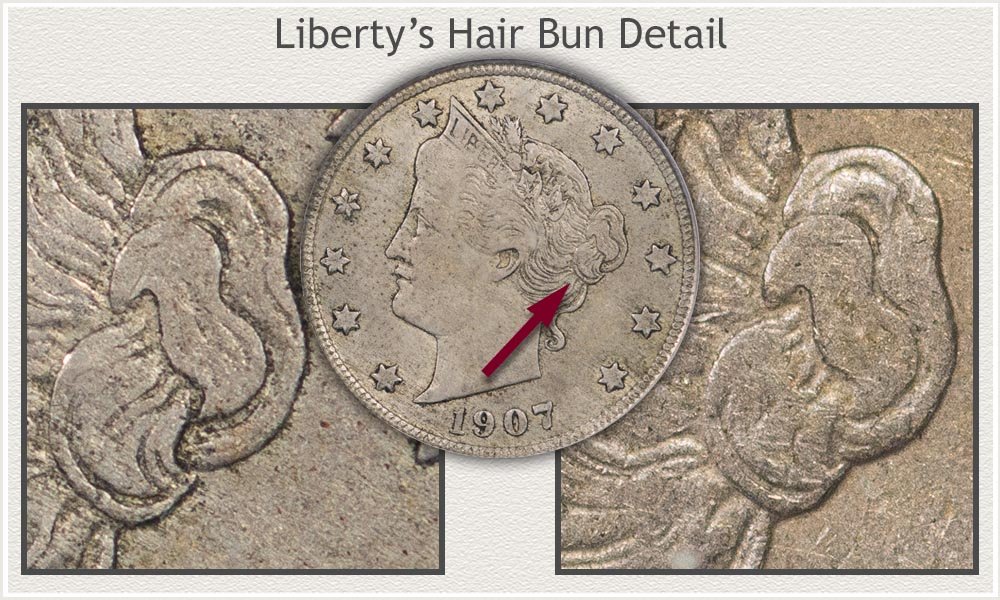 (fig. 7XF) Compare the Different Levels of Wear on Liberty's Hair Bun
(fig. 7XF) Compare the Different Levels of Wear on Liberty's Hair Bun
Located at the back of Liberty's head, her hair bun displays many hair strand details. As expected, in Extremely Fine grade, a small amount of flattened and merged areas indicates light wear. This light wear removes the recesses between hair strands, forming smooth areas. Notice her hair bun divides into three sections: a top, middle, and lower section. Each provides visual markers used to rate their level of clarity and condition.
Since all three sections of the bun typically show some wear. The rating metric concentrates on detecting if at least half or more of the original detail remains. Looking closely at the image (fig. 7XF), compare each section of the bun. The left side coin displays greater detail represented by the amount and length of recessed lines within the hair.
Hair Strand Detail - Bun - Top Section
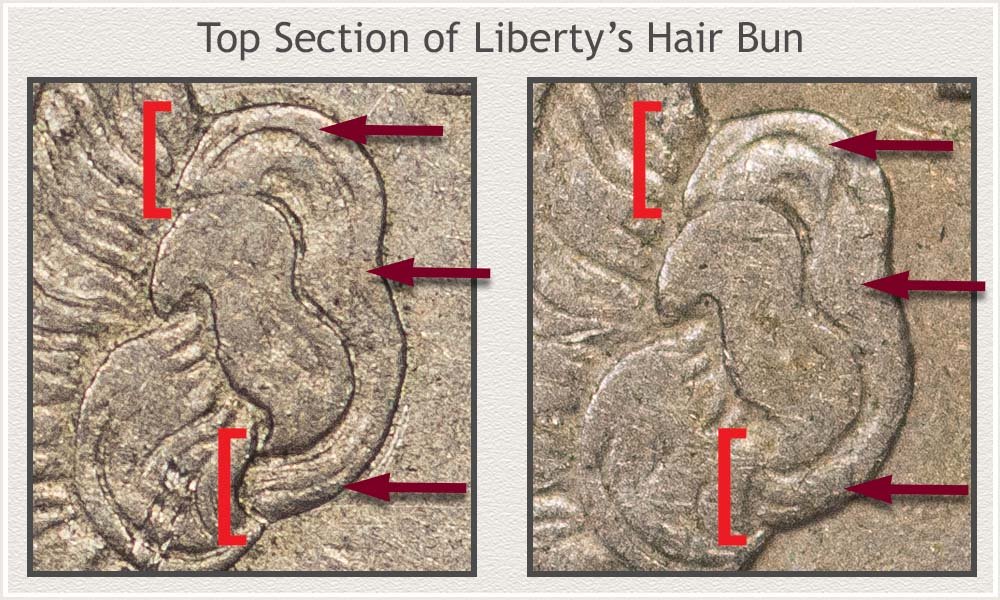 (fig. 8XF) Highlighted are the Metrics Defining Half or More from Less than Half Top Section Hair Detail
(fig. 8XF) Highlighted are the Metrics Defining Half or More from Less than Half Top Section Hair Detail
Inspecting the top section of the bun, greater than half detail is compared to less than half detail. In the illustration (fig. 8XF), the example on the left side example displays a key marker. Recesses and hair strands extend past the middle point. On the right example, this middle point appears as a smooth, blended area.
Hair Strand Detail - Bun - Middle Section
 (fig. 9XF) Highlighted are the Metrics Defining Half or More from Less than Half Middle Section Hair Detail
(fig. 9XF) Highlighted are the Metrics Defining Half or More from Less than Half Middle Section Hair Detail
The center section of the bun is a high relief area of the coin's design. This raised area receives most of the initial wear across the bun. In the Extremely Fine condition, this section often appears with few details. Illustrated on the left, when examined closely, faint hair strands extend from the top area, across the center, and into the lower area. In comparison, the right-side example shows slight evidence of visible detail. No recesses extend across the area.
Hair Strand Detail - Bun - Lower Section
 (fig. 10XF) Highlighted are the Metrics Defining Half or More from Less than Half Lower Section Hair Detail
(fig. 10XF) Highlighted are the Metrics Defining Half or More from Less than Half Lower Section Hair Detail
In the lower section of the bun, many strands of hair remain. Most of the wear and merging of strands appear in its upper area. In the example on the left (fig. 10XF), a small flattened area partially fades strands in only the top portion of the section. A key indicator is the deep recesses extending fully in the area. On the right-side example, extensive merging of strands covers most of the area. A lack of full strands helps to identify the Less than Half detail metric.
Rate the condition of each section with the following metrics defining Half or More and Less than Half Hair Detail.
Visual Rating Definitions: Hair Bun at Back of Liberty's Head
Top Section:
- Half or More: At least one strand complete through the center.
- Less than Half: Strands blend across its center.
- Half or More: Some strand detail in top and bottom halves.
- Less than Half: Smooth top and bottom halves, slight detail in center.
- Half or More: Small blending in top area, many long recesses in lower half.
- Less than Half: Blending in top and only a few long recesses in the lower area.
Rate the condition of each hair bun section using the definitions and guidelines.
Rating: Liberty's Hair Bun
|
Top Section |
Top Section |
|
Center Section |
Center Section |
|
Lower Section |
Lower Section |
Combining the ratings of each section into a score identifies the condition of this important visual metric. Use the total of 2 or more sections of the Hair Bun with a Metric Rating of Half or More as a Positive Score.
Scoring: Liberty's Hair Bun
|
|
Positive Score |
2 or More Sections Rating Half or More Indicates a Positive Score
Research Data Results: Hair Bun at Back of Head
Study Group of 27 Extremely Fine Grade Liberty Nickels
Liberty's hair bun represents only a small area of this coin's design. As a visual grading feature, it does show distinct levels of wear clearly. With its contour reaching a high point on the surface, a light amount of wear quickly changes the clarity of hair recesses. Notably, within the group of nickels studied, the center section showed the greatest amount of wear overall. Combining the ratings of each section produced the following percentage results.
- 30% | Of the nickels rated, all three sections with Half or More hair strand detail visible.
- 37% | Representing a high percentage of coins, rated 2 sections with Half or More hair strands defined by deep recesses remaining visible.
- 33% | Showed 1 section rating positive with Half or More hair strands detailed within the section.
Conclusion/Key Points: Significantly, all the graded examples obtained a rating of Half or More hair detail in at least one section. These coins are represented in the lower 33% group. On a percentage basis, the greatest number of coins, 67%, rated 2 or More highly detailed sections. This condition of 2 or More Sections with a Metric Rating of Half or More Detail determines the Positive Score.
Importantly, all coins with at least one section of visible hair bun detail have the possibility of reaching the Extremely Fine grade. This Hair Bun metric rates the condition of a high relief design area. A soft strike on high contours affects the overall depth of recesses, causing some sections of the bun to rate low. Combining the Rating and Scores of many design areas determines an overall Final Score. This evens out the effects of different strike quality among the coins in the Liberty nickel series.
Visual Grading Metrics Evaluated on the Reverse
With an abundant amount of small design elements, the reverse has specific grading features. One of the challenges of grading the reverse of a Liberty nickel is the various qualities of strike.
Because of strike quality, many potential grading features show a range of strong to weak impressions. As example; the left side is often weakly impressed. The ears of corn on the left side many times appear faded. This lowers the ability to correctly gauge wear amounts. The following features were chosen to help give an accurate presentation of wear.
Condition Metrics | Second Ear of Corn
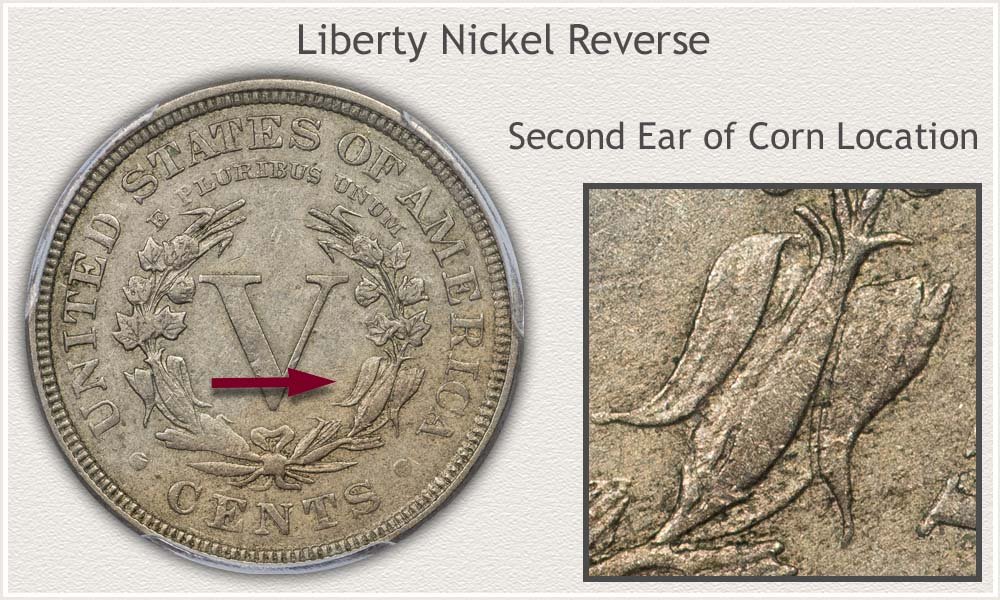 (fig. 11XF) Locate the Highlighted Second Ear of Corn on a Liberty Nickel
(fig. 11XF) Locate the Highlighted Second Ear of Corn on a Liberty Nickel
Of the four ears of corn within the wreath, the right-side ear, second up from the bow, displays useful grading metrics. Within the light wear condition range, this specific design feature registers wear in three distinct areas. Visible wear patterns are measurable within the center of the ear and the leaves of the husk on either side. Rating the level of detail remaining within these three areas helps define their condition.
The Important Detail Within the Second Ear of Corn
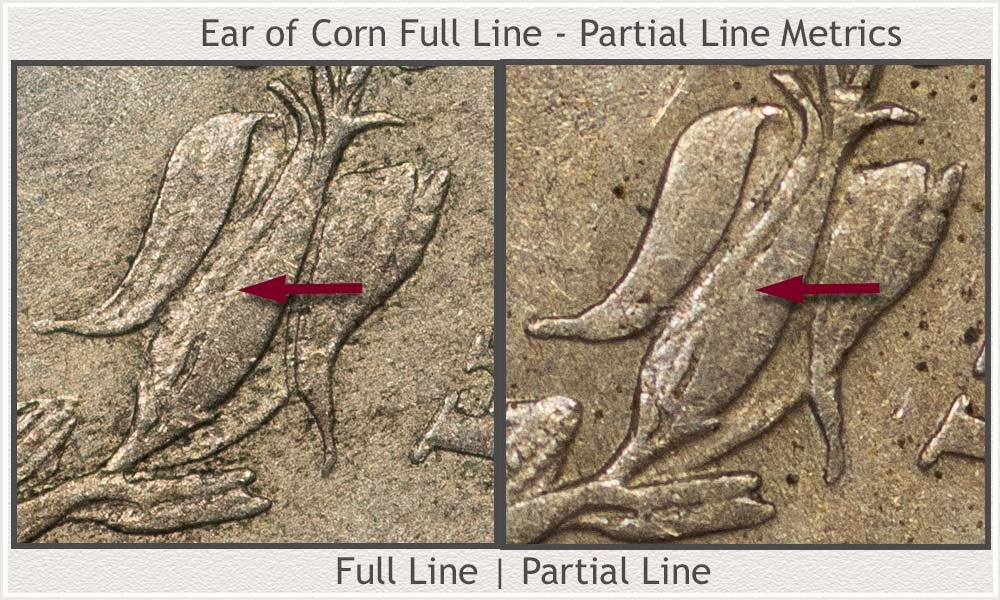 (fig. 12XF) Visual Metrics of Full to Partial Line on the Ear of Corn
(fig. 12XF) Visual Metrics of Full to Partial Line on the Ear of Corn
A closed ear of corn is the central part of this overall metric. Its raised contour displays a recessed line extending from the base to the top, indicating unopened leaves. Inspecting this central recess line and judging its completeness measures a specific level of wear. The central line is either full and complete or partial and missing in areas. Illustrated (fig. 12XF) examples show this visible difference between a Full or Partial line.
How to Rate the Left-Side Corn Leaf Detail
 (fig. 13XF) Visual and Missing Rating Metrics of the Left-Side Leaf
(fig. 13XF) Visual and Missing Rating Metrics of the Left-Side Leaf
The left-side leaf still displays small recessed lines when lightly worn. The image (fig. 13XF) illustrates this light wear and remaining lines. Visible lines display on the first example. As continued wear begins to fade and remove these lines, smoothness begins to cover the leaf. Note the lack of leaf detail on the second example coin. On the second coin, and showing faintly, small remnants of the lines remain. However, most of the leaf is smooth on this example.
Identify the Right-Side Leaf Detail
 (fig. 14XF) Visual and Missing Rating Metrics of the Right-Side Leaf
(fig. 14XF) Visual and Missing Rating Metrics of the Right-Side Leaf
A third area, the leaf on the right side of the ear, also exhibits slight wear along recesses of its length. This visual metric focuses on detecting visible recesses or a lack of this detail. Both conditions are illustrated in the image (fig. 14XF). The first example shows a clear level of detail. Many lines remain. Compared to the other example, most of the leaf appears smooth, lacking any interior line detail. This visible to missing difference is a clear metric indicating condition. Use the following definitions when judging condition of the three areas on the corn.
Visual Rating Definitions: Second Ear of Corn
Ear of Corn Detail
- Visible Full Center Line: Visible recess line extending full length of corn ear
- Partial Line: Any area of the line faded and missing
- Visible Lines: Clear Recesses extending at least partway along the leaf
- Missing Lines: Faint to Missing Recesses - Leaf Mostly Smooth
- Visible Lines: Clear Recesses extending at least partway along the leaf
- Missing Lines: Faint to Missing Recesses - Leaf Mostly Smooth
Giving each of the three areas a close examination, rate their condition.
Rating: Second Ear of Corn
|
Ear of Corn |
Ear of Corn |
|
Left Leaf Detail |
Left Leaf Detail |
|
Right Leaf Detail |
Right Leaf Detail |
With all parts of the corn rated score its metrics. Check the gray circle when 2 or More Features Rate Visible Lines.
Scoring: Second Ear of Corn
|
|
Positive Score |
2 or More Features Rating Visible Lines Indicates a Positive Score
Research Data Results: Second Ear of Corn on the Right Side of Wreath
Study Group of 27 Extremely Fine Grade Liberty Nickels
Judging this ear of corn in separate distinct areas showed a range of results. When the visual metrics were applied to the group of study nickels, they produced the following percentage results.
- 59% | A high percentage of nickels rated positive in all Three areas.
- 30% | Showed positive ratings in Two areas.
- 11% | A small percentage only showed One area with a positive rating.
- 0% | None of the coins rated negative in all three areas.
Conclusion/Key Points: 89% of the coins were visually detailed in at least two metrics. This represents a significant percentage and determines the positive score, indicating a coin within grade range.
One set of metrics stands out. All of the study nickels remained with one area showing ample detail. A 100% positive rating of the Right-Side Leaf becomes an important feature to confirm its visual detail.
Award a coin with Two or More Features Rating Visible Lines a Positive Score.
Visual Condition Metrics | Four Cotton Leaves
 (fig. 15XF) Six Cotton Leaves Highlighted Within Wreath on Reverse of the Liberty Nickel
(fig. 15XF) Six Cotton Leaves Highlighted Within Wreath on Reverse of the Liberty Nickel
Within the wreath there are six cotton leaves, all remaining well detailed at the Extremely Fine grade. The many small and fine details of the leaves show subtle wear patterns in visual stages.
Of the cotton leaves featured, four are useful helping indicate the coin's condition. Leaves 1-2-3 and 6, as highlighted in (fig. 15XF), are similar in design structure and placed in locations spaced across the wreath. This gives an overall indication of the amount of wear.
When inspecting each leaf, a variety of metrics combine, indicating their overall condition.
Metric: Visible Central Vein Recess
 (fig. 16XF) Visible vs. Missing Detail of the Central Vein Recess of the Cotton Leaves
(fig. 16XF) Visible vs. Missing Detail of the Central Vein Recess of the Cotton Leaves
The focus of this metric is the distinctive central recess within the leaf. At the leaf's base, a deep recess begins and travels towards the large, middle leaf tip. To qualify and rate as "Visible," this recess extends into the upper part of the leaf and into its tip area. Note the example "Missing" recess (fig. 16XF); the central vein recess ends before reaching the tip area.
The metric determines if the central recess visibly extends most of its length and into the upper part of the leaf tip.
Metric: Secondary Branch Recess
 (fig. 17XF) Comparing the Visible and Missing Metrics of the Secondary Branch Recess on the Cotton Leaves
(fig. 17XF) Comparing the Visible and Missing Metrics of the Secondary Branch Recess on the Cotton Leaves
This metric judges the visibility of Branch Recesses attached to the Central Recess. In the image (fig. 17XF), the left example clearly shows attached branch recesses along the length of the central recess. To qualify for a "Visible" rating, at least one of the branch recesses remains visible. On the right example, a greater amount of wear removed these small details. The branch recesses do not connect to the main recess. The extra wear combined with incomplete detail indicates a lower condition.
Metric: Visibility of Both Side Recesses
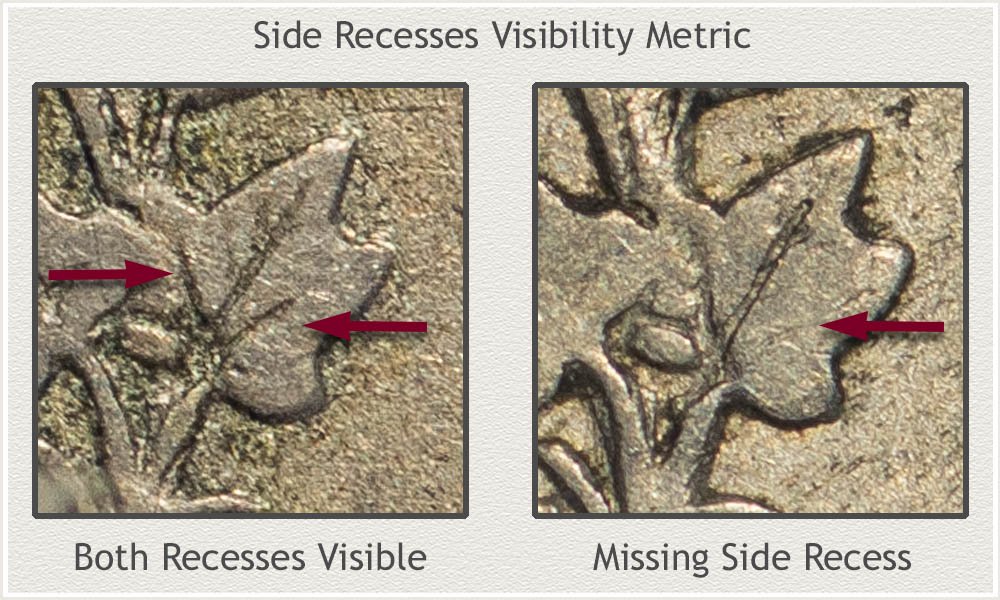 (fig. 18XF) Visual Detail of the Side Veins and Their Quality at the Extremely Fine Grade
(fig. 18XF) Visual Detail of the Side Veins and Their Quality at the Extremely Fine Grade
Inspect and focus on the side recesses that start at the base of the leaf. There are two side recesses, a left and right, beginning at the leaf base and extending upward, pointing to the smaller leaf tips. To help locate the correct detail, reference the example (fig. 18XF). Looking at the tip of the smaller leaf points, cast a line towards the center of the leaf base. These side recesses follow this line.
Award the "Visible" metric rating to the leaves when both side recesses are clearly visible. These travel at least a short distance from the leaf base towards the smaller leaf tips. The second example illustrates a "below metric standard" of this detail. Note, only one side recess beginning at the leaf base remains.
Rating the Visible Metrics of the Four Cotton Leaves
When inspecting and judging the amount of wear on the four cotton leaves, use the following metric definitions to help rate their condition.
Visual Rating Definitions | Four Cotton Leaves
- Central Recess Visible: A continuous Central Recess extends from the leaf base into the tip area. It is important this central recess remains visible along its length. No missing areas.
- Secondary Branch Recess Visible: One or More Secondary Recesses remain visible extending outward from the central recess.
- Both Side Recesses Visible: Beginning at the leaf base, both a Left and Right-Side Recess extend into the leaf towards their leaf tips.
Rate the condition metrics of all four leaves, checking the box when the metric is visible.
Visual Grading Metrics | Four Cotton Leaves
|
Central Recess |
Secondary Recess |
Both Side Recesses |
|
Leaf 1 |
Visible |
Visible |
Visible |
|
Leaf 2 |
Visible |
Visible |
Visible |
|
Leaf 3 |
Visible |
Visible |
Visible |
|
Leaf 6 |
Visible |
Visible |
Visible |
This inspection rated 12 different metric points across a large area of the reverse. Their cumulative results now help determine an overall grade level of condition. Count the number of "Visible" ratings. A total of 8 or More "Visible" Metrics Rates a Positive Score. Check the gray circle to record the coin meets this quality.
Scoring: The Four Cotton Leaves
|
|
Positive Score |
8 or More Visible Metrics Rates a Positive Score
Research Data Results: Four Cotton Leaves
Study Group of 27 Extremely Fine Grade Liberty Nickels
Judging these four leaves with their highly detailed design provided an abundant amount of grading metrics. Using the definitions indicating the "Visible" quality, the study group of nickels showed the following percentage results.
- 30% | Of the nickels showed a high level of detail, with all 12 metrics rated as "Visible."
- 19% | A large percentage retained the "Visible" rating within 11 locations.
- 7% | Were positive and "Visible" over 10 of the metric areas.
- 26% | Had 9 "Visible" rating scores.
- 18% | Still showed a positive metric of "Visible" within 8 of the 12 areas inspected.
- 0% | Not one nickel rated 7 or fewer "Visible" metrics.
Conclusion/Key Points: Two strong condition indicators register in the percentage results. Firstly, the fact all nickels within the Extremely Fine grade rated positive in more than half of the grading metrics.
Secondly, a high quality of detail remains within the leaves to meet the grade level. Light wear does smooth all surfaces of the leaves. However, the delicate detail within the leaves must show an ample amount of design. Significantly, 100% of the nickels rated 8 or More Visible Metrics. This high scoring metric becomes a deciding indication that only light wear has occurred on the coin.
As a side note: Interestingly, 18% of the nickels with 8 positive metrics graded Extremely Fine. This somewhat large percentage demonstrates grading a Liberty nickel combines many visual metrics. It is the full overall condition of the nickel and enough positive rating metrics leading to awarding the grade.
When scoring the coin, use the rating of 8 or More "Visible" Metrics across the leaves Rates a Positive Score.
Final Visual Metric Scoring | Extremely Fine Grade Liberty Nickel
Pulling together the scores of all metrics into a Final Score determines an accurate indication of a Liberty nickel's grade. The grading process follows an approach of awarding positive scores to the upper percentage ratings. These different metrics help separate various conditions into a grade range.
The importance of condition becomes a deciding factor when placing values on these old nickels. After deciding on a grade, reference the chart - Liberty Nickel Values - to find an accurate value.
The Final Scoring below registered all the positive scores from the grading metrics as the coin was evaluated.
Use 5 or More Positive Scores as an Indication of the Extremely Fine Grade
Final Scoring: Visual Metrics Extremely Fine Grade Liberty Nickel
|
Positive Score |
Design Device |
Visual Grade Metric |
|
|
Letters of LIBERTY |
Full/Clear Lettering |
|
|
Hairline Above Forehead |
A Bold or Visible Hairline |
|
|
Forehead Hair Strand Detail |
Half or More Hair Strand Detail |
|
|
Liberty's Hair Detail Above Ear |
Light to Medium Merging |
|
|
Liberty's Hair Bun |
2 or More Sections Rating Half or More |
|
|
Second Ear of Corn |
2 or More Features Rating Visible Lines |
|
|
Four Cotton Leaves |
8 or More Visible Metrics |
Research Data Results: Final Scoring Extremely Fine Grade Liberty Nickel
The study group of 27 professionally graded nickels produced the following Final Scoring percentage results.
- 52% | Scored positive in all 7 metrics.
- 26% | A significant number Scored high with 6 metrics as positive.
- 15% | Of the nickels Scored 5 Positive metrics.
- 7% | Showed an amount of wear resulting in Scoring at the 4 Positive metric.
Conclusion/Key Points: A distinct level of wear was identified and rated within the group of study nickels. Combining the highest rating percentages found 93% of the nickels rated 5 or More Positive Scores across all the visual metrics. These high scoring coins were pleasing, with only light wear evident.
When inspecting a Liberty nickel closely and rating the visual metrics conservatively, the scoring of the results determines its condition.
Use a Final Score of 5 or More Positive Metric Scores to identify the Extremely Fine grade.
References
U.S. Mint. Symbols on Our Coins
https://www.usmint.gov/learn/history/us-circulating-coins
U.S. Mint. Catalogue of Coins of the United States
https://nnp.wustl.edu/library/book/554591
Coin Values | CoinStudy Articles
Liberty Nickel | Visual Grading Metrics Series
Visual Grading Metrics: Liberty Nickels Mint State Grade
Visual Grading Metrics: Liberty Nickels Fine Grade
Visual Grading Metrics: Liberty Nickels Good Grade
Grading Liberty Nickels | Starting Guide
Continue with an overview of the grading process. Use the guide and determine a narrow condition range of Liberty nickels. Close-up images point to important features identifying individual grades. Video demonstrates key grading points. Follow the descriptions to grade these old nickels.
How to Grade Liberty Nickels | Visual Guide
Finding Liberty nickels in quality condition becomes a challenge today. Start with the grading guide developing an understanding of the grading process.
Liberty Nickel Values | Condition and Grade Determine Worth
Judging condition into a grade performs an important step in the value process. Continue the process by referencing the value chart listing dates and grades. Determine how much your graded Liberty nickel is worth.
★Coin Values Discovery... finds Liberty Nickel Values and...
Value charts listing old coin values. Compare your coin to images of the different series leading to specific value charts. Start the defined method to determine how much a box of old coins is worth.

